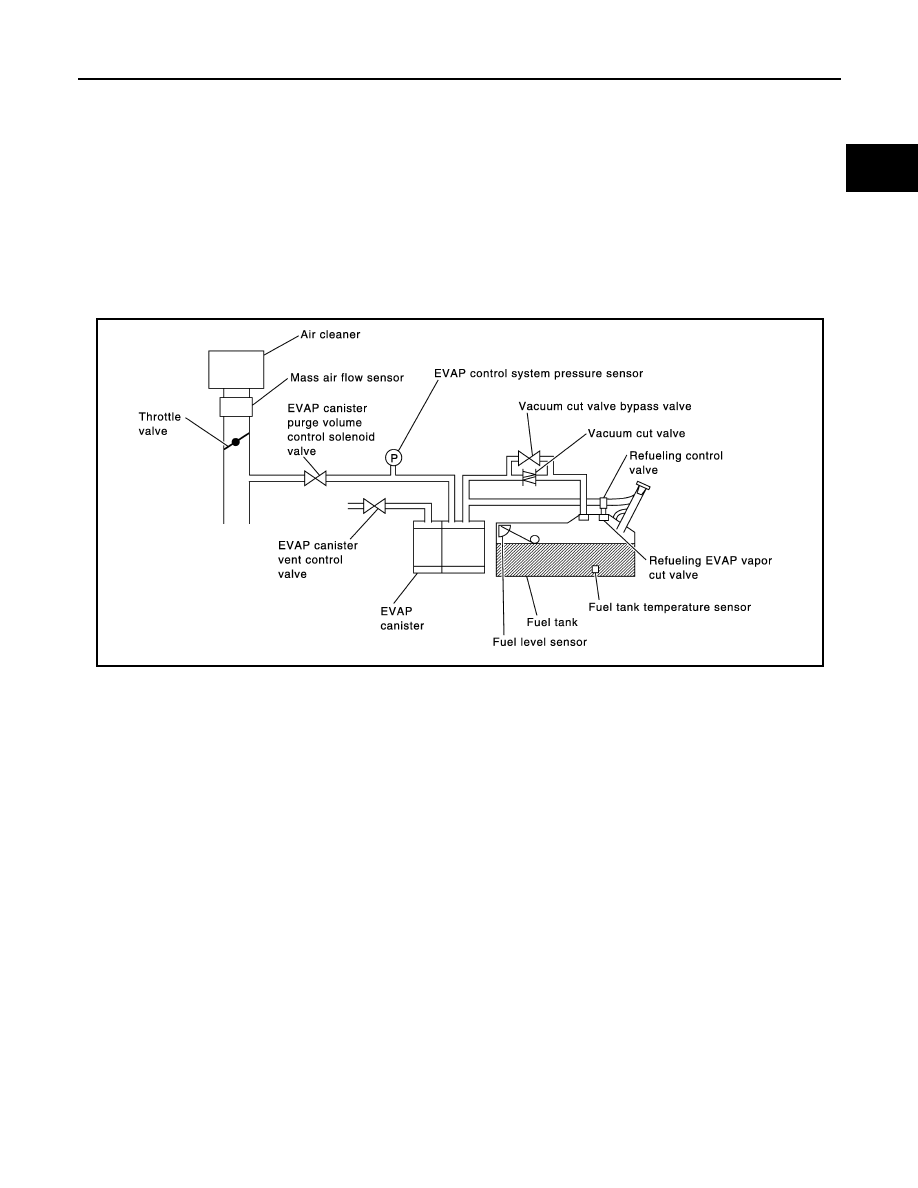Nissan Frontier D22. Manual - part 346

DTC P1456 EVAP CONTROL SYSTEM
EC-487
[KA24DE]
C
D
E
F
G
H
I
J
K
L
M
A
EC
DTC P1456 EVAP CONTROL SYSTEM
PFP:14710
On Board Diagnosis Logic
UBS00DBR
This diagnosis detects very small leaks in the EVAP line between fuel tank and EVAP canister purge volume
control solenoid valve, using of vapor pressure in the fuel tank.
The EVAP canister vent control valve is closed to shut the EVAP purge line. The vacuum cut valve bypass
valve will then be opened to clear the line between the fuel tank and the EVAP canister purge volume control
solenoid valve. The EVAP control system pressure sensor can now monitor the pressure inside the fuel tank.
If pressure increases, the ECM will check for leaks in the line between the vacuum cut valve and EVAP canis-
ter purge volume control solenoid valve.
If ECM judges a leak which corresponds to a very small leak, the very small leak P1456 will be detected.
If ECM judges a leak equivalent to a small leak, EVAP small leak P1442 will be detected.
If ECM judges there are no leaks, the diagnosis will be OK.
PBIB1402E